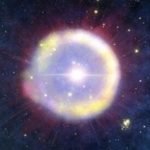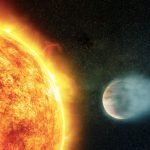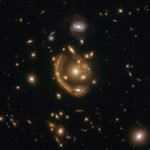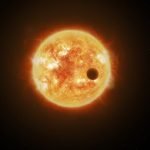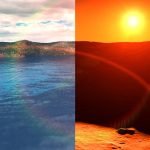This nearby dwarf galaxy has been a loner for almost the entire age of...
The James Webb Space Telescope Early Release Science (ERS) program – first released on July 12th, 2022 – has proven to be a treasure...
Star death reveals a midsize black hole lurking in a dwarf galaxy
An intermediate-mass black hole lurking undetected in a dwarf galaxy revealed itself to astronomers when it gobbled up an unlucky star that strayed too...
New images reveal secrets of an earlier Universe
A research team led by the University of Minnesota Twin Cities has measured the size of a star dating back 2 billion years after...
Early planetary migration can explain missing planets
A new model that accounts for the interplay of forces acting on newborn planets can explain two puzzling observations that have cropped up repeatedly...
Scientists may find the first traces of the universe’s earliest stars
Astronomers may have discovered the ancient chemical remains of the first stars to light up the universe.
Using an analysis of a distant quasar observed...
Exoplanets make it harder to figure out a star’s age
Estimating stellar age has always been a challenge for astronomers.
Now, a certain class of exoplanets is making the process even more complicated.
Hot Jupiters –...
Cosmic inflation could be ruled out in the early universe, shows study
There is a clear, unambiguous signal in the cosmos which could eliminate inflation as a possibility, shows new study.
The study, published in The Astrophysical...
It’s tough to find evidence of stars eating planets
Tragically sometimes stars engulf their own planets. In some cases the evidence can linger for up to two billion years.
Scientists discover the oldest planetary debris in our galaxy
Astronomers led by the University of Warwick have identified the oldest star in our galaxy that is accreting debris from orbiting planetesimals.
This makes it...
Early crust on Mars is more complex than thought
Early crust on Mars may be more complex than previously thought—and it may even be similar to our own planet’s original crust.
The Martian surface...





